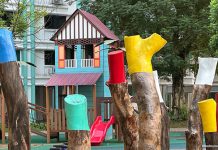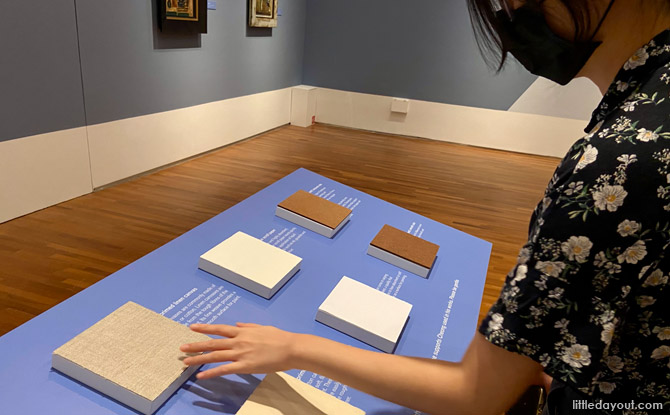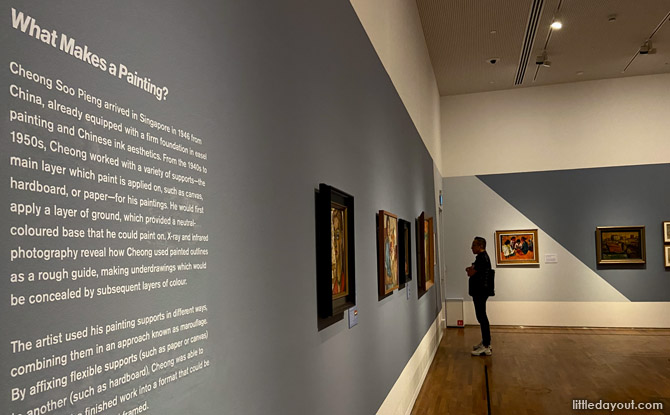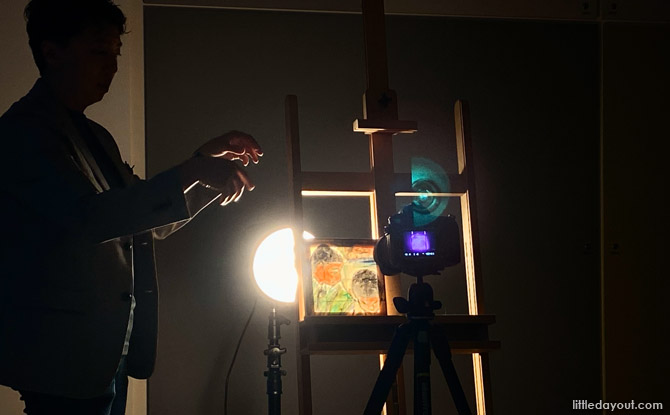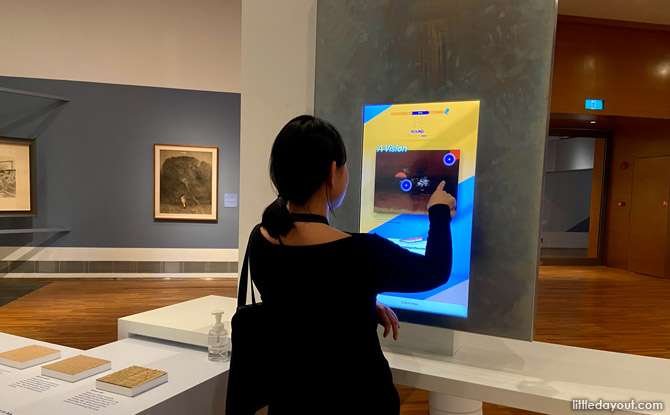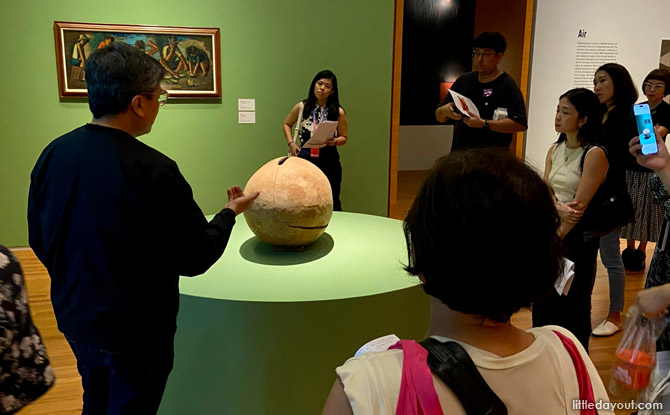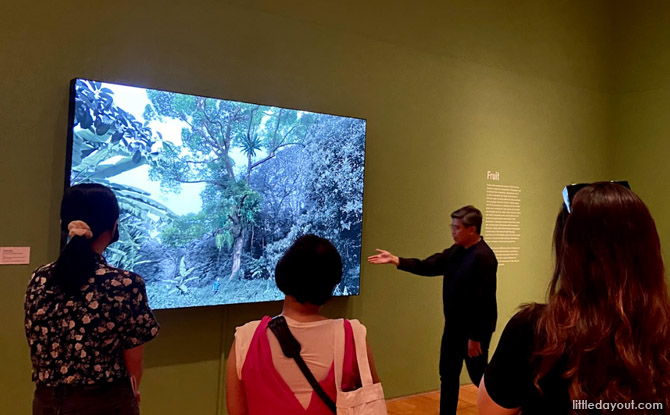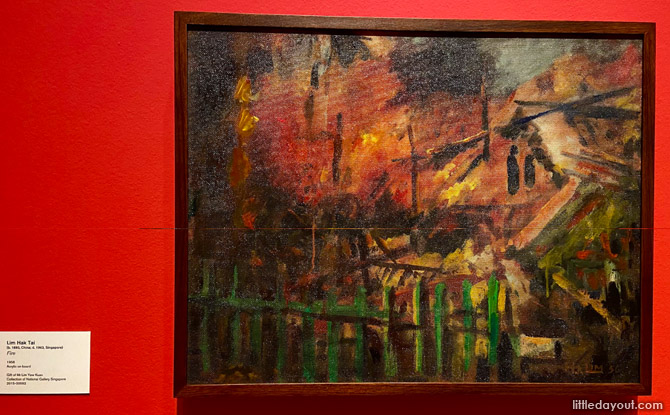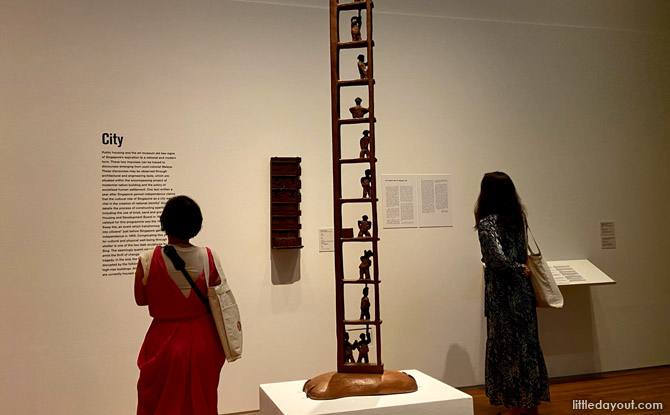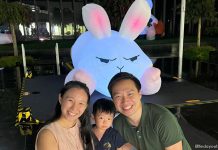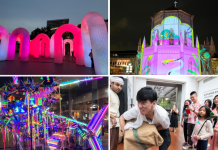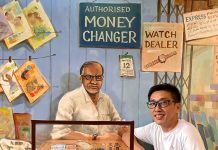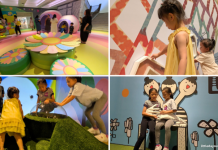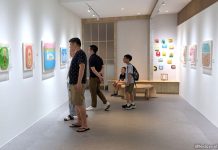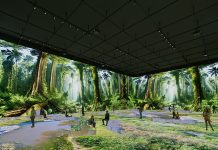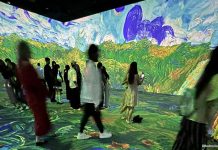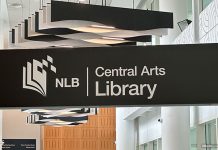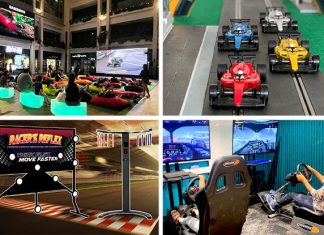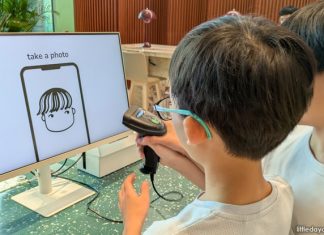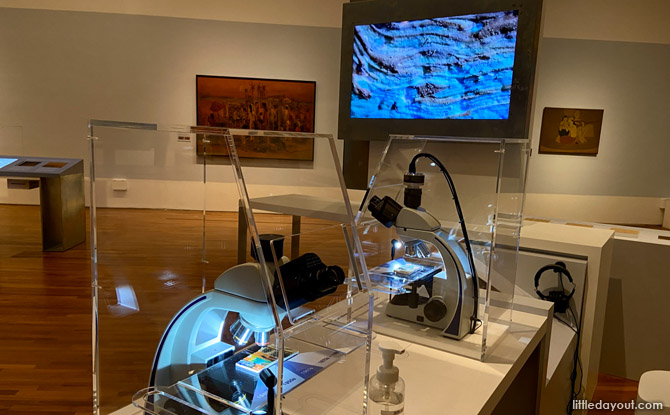
Art enthusiasts and curious minds alike are in for an extraordinary treat as National Gallery Singapore presents two new highly anticipated exhibitions, Cheong Soo Pieng: Layer by Layer and Figuring A Scene.
Two New Exhibitions at National Gallery Singapore – Cheong Soo Pieng: Layer by Layer & Figuring a Scene
Both exhibitions open their doors to the public on 5 April 2024.
Exhibition 1:Cheong Soo Pieng: Layer by Layer
Have you ever wondered how science and art can come together to uncover the hidden stories within artworks?
This exhibition invites visitors to step into the artistic world of the pioneering Singaporean artist, Cheong Soo Pieng.
More than just a display of his renowned artworks, this exhibition is Southeast Asia’s first to use cutting-edge material analysis tools such as x-ray scans and infrared photography to unravel fresh insights into Cheong’s intricate artistic processes and his innovative use of materials.
About Layer by Layer at National Gallery Singapore: The Science behind Cheong Soo Pieng’s Art
Layer by Layer offers an interactive exhibition experience that breaks down Cheong’s artistic approach for visitors of all ages.
By incorporating interactive stations that bring the science of studying paintings to life, visitors will develop a deeper understanding of Cheong’s trailblazing methods through a quest of exploration, investigation, and play.
The exhibition presents over 30 paintings by Cheong from the 1950s to the 1980s, divided into three captivating sections, each posing fundamental questions about Cheong’s painting process.
The journey begins with the thought-provoking question, “What makes a painting?”
Visitors are invited to embark on a captivating exploration of Cheong’s artistic process, from his initial sketches, his choice of materials, to the final brushstrokes. Through a series of interactive stations, participants gain a deeper understanding of Cheong’s innovative techniques, as revealed through material analysis.
In a collaboration between Teo Hui Min, the exhibition curator, Dr Diana Tay, a conservator and founder of BARC Labs, the Heritage Conservation Centre, and radiographers from the Singapore General Hospital, scientific technology provides a fresh perspective and understanding of Cheong’s artworks.
Unveiling the Art Pieces Layer by Layer
One such standout is Cheong’s early work, Indian Men with Two Cows (1949), the public can see for the first time how infrared photography was used to unveil a deeper analysis of his artwork. The infrared photography revealed Cheong’s expertise in his confident application of paint executed without the use of preliminary sketches.
Additionally, visitors will encounter Cheong’s unique approach to layering, known as marouflage, which allowed him to affix flexible supports such as paper or canvas to other surfaces, where his choice of support enabled him to achieve a wider range of textures and effects in his paintings .
Continuing the journey, the exploration shifts to the question, “When is a painting complete?”
In this section, visitors are invited to travel back in time to unravel the journey of Cheong’s monumental painting, In a Balinese Village. What makes this painting so interesting is that two different versions of this very same painting exist within the same artwork.
Technical tools like infrared photography and x-ray scans were able to unveil that there was another version of the painting hidden behind this final version that Cheong exhibited in 1964. Cheong actually reworked the initial version of the painting, on the same canvas, leading to two paintings existing within the same canvas.
Interactive Elements of the Exhibition
The culmination of the exhibition lies in the closing section, where visitors are encouraged to ponder the broader question, “What is painting?” Here, Cheong’s integration of unconventional materials challenges traditional notions of painting, inviting viewers to expand their understanding of artistic expression.
From metal wires and resin, to rattan and straw, and even jute from gunny sacks and straw, Cheong’s diverse palette extends beyond traditional mediums, creating a rich tapestry of textures and forms that defy categorisation.
Not only do visitors get to see these materials in the paintings, but they also have the opportunity to touch these materials used, and use microscopes to get a closer look at how different the composition of each material is.
Layer by Layer isn’t just a passive viewing experience; it stands out as an extremely interactive journey of discovery and exploration.
Engage in hands-on experiences, from exploring the materials incorporated in Cheong’s art to examining the multiple microscope stations scattered around the exhibition that brings to light the unseen process of art creation and conservation.
Our Take on Layer by Layer
An interactive game, available both on-site and online, invites visitors to explore Cheong’s painting techniques while matching cross-sections with featured artworks, offering a deeper understanding of his innovative approach.
After playing the game, visitors will even be able to bring back a souvenir as they will be able to download exclusive wallpapers from the exhibition.
For those eager to delve even deeper, the exhibition offers the latest edition of At the Conservator’s Bench | Cheong Soo Pieng: Layer by Layer. This enriching video series delves into the conservation science behind Cheong’s works, offering invaluable insights into his versatile practice and innovative techniques.
Cheong Soo Pieng: Layer by Layer promises to be a transformative experience for all ages, offering a rich tapestry of discovery and appreciation.
Don’t miss the opportunity to uncover the layers of artistry within Cheong Soo Pieng’s timeless masterpieces in this exhibition that runs from 5 April to 29 September 2024, at the Ngee Ann Kongsi Concourse Gallery, National Gallery Singapore. Admission is free.
Exhibition 2: Figuring a Scene
A short walk from Cheong Soo Pieng: Layer by Layer is another exciting new exhibition presented by the National Gallery of Singapore, Figuring a Scene. This exhibition is housed in Dalam Southeast Asia, which stands out as the Gallery’s first-ever experimental project space. It features the lesser-known narratives and under-studied artists from the region, and innovative presentations of Southeast Asian modern and contemporary art.
Curated by Dr. Patrick Flores, Deputy Director of Curatorial and Research at National Gallery Singapore, Figuring a Scene presents artworks in six distinct episodes that explore how elements from nature can lend meaning by animating social forms and shaping each viewer’s unique understanding of artworks.
From fire to city, to fruits to shadow, to air and to wax, each unique episode of Figuring a Scene is based on a specific natural element perceived in the artwork, inviting visitors to consider how elements of nature can draw out different interpretations based on each unique individual’s situation, knowledge and lived experiences.
Six Episodes of Figuring A Scene
What sets this exhibition apart is that it diverges from the typical linear storytelling approach as commonly found in most art galleries. Instead, visitors can engage with the episodes both collectively and independently.
When experienced collectively, visitors can uncover links between the thought-provoking artworks across the episodes, encouraging fresh perspectives on the overarching themes and narratives presented, and inviting reflection and discourse.
The exhibition opens with the episode, Shadow, where Malaysian artist Sharon Chin’s Creatures on the Move (In the Death of Night), presents an artwork born from activism. A powerful commentary on climate justice, this artwork guides visitors to reflect on the ongoing global ecological crisis.
It was inspired by the artist’s personal experience in Port Dickson, where an oil refinery was built right at the doorstep of her neighbourhood which was rich with flora and fauna. The animal placards originally created by Shin for a Climate Strike protest in Kuala Lumpur were remade into large shadow puppets and assembled in a mural.
Chin probes the tension between the coexistence of nature and technology within the same setting by casting the shadows of the animals found in her garden against the background of the oil refinery, sparking discourse between national development and ecological preservation.
In the episode titled Fruit, the focus shifts to the cultural significance of the durian, a beloved symbol of Southeast Asian identity that is often dubbed the “national fruit” of Singapore.
Visitors are invited to explore the multifaceted representations of the durian in art. View Anusapati’s sculptural homage Single Object made from a fallen durian tree, Liu Kang’s vibrant painting Durian Vendor capturing the bustling durian markets, to Robert Zhao Renhui’s photograph of what is believed to be the oldest durian tree standing tall in the forest of Bukit Panjang.
Through these artworks, viewers are encouraged to reflect on the durian’s colonial history, its economic significance, and its enduring presence and identity in Southeast Asian culture.
The destructive power of fire and its transformative impact on society take centre stage in the compelling episode, Fire. The catastrophic Bukit Ho Swee fire of May 25, 1961, was a pivotal event in Singapore’s history. It catalysed the nation’s first major steps towards urban development through public housing initiatives.
This episode introduces visitors to local artists who used paintings, drawings, and prints to capture the dual nature of fire – as both a destructive force and a catalyst for regeneration.
By imbuing their artworks with elements of nostalgia, anticipation, and everyday life, these artists encourage visitors to reflect on both the devastation caused, and the resilience of communities in the face of adversity, and their enduring spirit of rebuilding.
In the episode, Air, artists adeptly tackle the challenge of visually representing the invisible yet omnipresent element by drawing on its effects on the environment to make the element “seen”.
Sun Yee’s painting conjures the presence of air by capturing the movement of wind and hints of impending storms. Lim Tzay Chuen’s photograph reveals the presence of air through the faint particles of a diffused atmosphere created by a fogger releasing pheromones.
As light delicately sculpts the contours of the stairs in the building, the air gains tangible presence within the image. Through their creative interpretations, both artists prompt viewers to reconsider the often-overlooked presence of air in art and everyday life, inviting contemplation of its transformative power and influence on our perception of the world.
In the episode, Wax, Filipino artist Renato Habulan’s assemblage, Tira, stands out as a profound exploration of themes rooted in the colonial religion of Catholicism in Philippine culture and history.
This fascinating artwork incorporates diverse materials like driftwood, found statuary, and paraffin wax to construct a multi-layered narrative, where it is as part-altar, part-processional carriage and part-sepulchre. At its core is a wooden sculpture depicting the transfigured Christ, weaving together motifs of religion, nature’s destruction, and death.
Paraffin wax binds the elements together, symbolising both the embeddedness and fragmentation of the religious system, alongside the implications of the horrors of war in the Southern Philippines. Tira carries multiple meanings, and invites visitors to reflect on the complexity of the artwork through their own interpretations.
The final episode, City, delves into the complex interplay between the urban landscape and cultural identity, exploring how national culture thrives amidst rapid modernisation. Central to this exploration is Shui Tit Sing’s teak sculpture, Why?, which features Singapore’s modern urban skyline with miniature figurines of residents tumbling from the high-rise buildings.
Step into the world of Figuring a Scene and uncover the hidden stories waiting to be discovered at Dalam Southeast Asia, UOB Southeast Asia Gallery, National Gallery Singapore from April 5th to December 1st, 2024. Admission is free for Singaporeans and Permanent Residents, offering a unique opportunity to explore the rich tapestry of Southeast Asian art and culture through Dr. Flores’s thought-provoking curation.
Cheong Soo Pieng: Layer by Layer
Ngee Ann Kongsi Concourse Gallery
5 April to 29 September 2024
Admission is free
Figuring a Scene
Dalam Southeast Asia, UOB Southeast Asia Gallery
5 April to 1 December 2024
Admission is free for Singaporeans and Permanent Residents
Find out more from National Gallery Singapore’s website.




